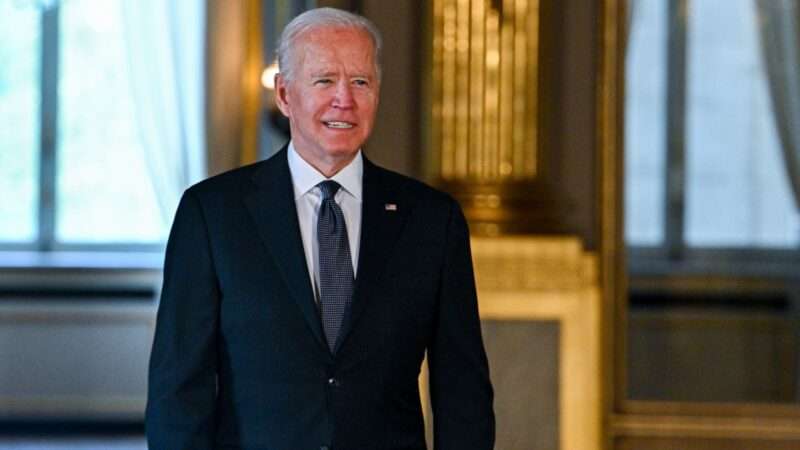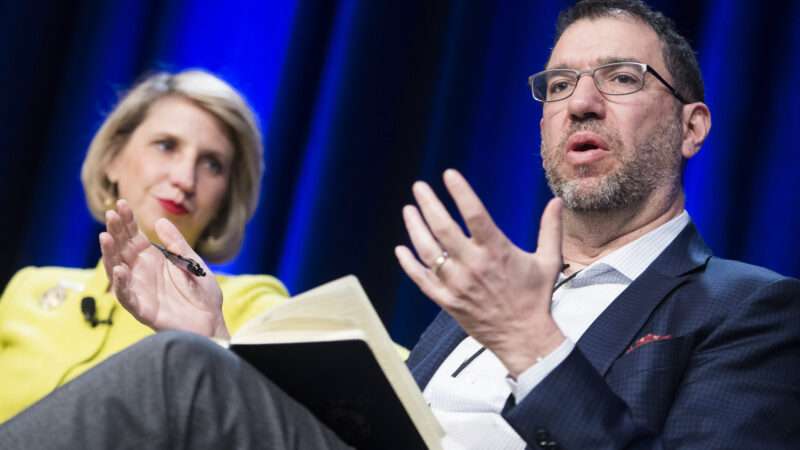
Though President Joe Biden is coming up on 150 days in office, many of the promises he made on the campaign trail have fallen flat. They came as part of his case against former President Donald Trump, which hinged in large part on crafting an immigration system that looked nothing like the one Trump presided over. But for many migrants coming to the Southwest border, the situation is little changed under Biden.
Biden has continued much of the Trump administration’s approach to immigration: separating families, overfilling detention facilities, and plainly telling people to stay away. One such holdover policy is Title 42.
Invoked by Trump in March 2020, Title 42 is a section of the Public Health Service Act that grants federal health officials broad discretion to enact disease mitigation measures. The Centers for Disease Control and Prevention (CDC) used it to issue an order barring certain kinds of arrivals to the U.S. borders with Mexico and Canada while permitting other forms of international movement to continue. It allows Customs and Border Patrol (CBP) officials to expel migrants immediately upon arrival.
In practice, the measure almost exclusively applies to asylum seekers arriving at the Southwest border. Between March and September 2020, for instance, the Southwest border saw 197,043 Title 42 expulsions compared to just 328 at the Canadian border. In total, CBP has carried out over 640,000 Title 42 expulsions in one year of the order’s application.
That all flies in the face of legal protections for migrants. According to David J. Bier, an immigration expert at the Cato Institute, it’s a massive disruption of U.S. asylum law, “which guarantees [migrants] the right to apply at any port of entry.” Presentation at a port of entry or on U.S. soil is a necessary component of the asylum-seeking process. Bier says it’s imperative that the Biden administration “afford asylum seekers every opportunity to make their claims” and “reopen ports of entry to allow asylum seekers to apply there.”
That’s all impossible under Title 42, though. Danilo Zak, senior policy and advocacy associate for the National Immigration Forum, notes that vulnerable migrants have been harmed by Title 42’s blanket approach to expulsions. “Even if an individual or family can provide evidence that they have been specifically persecuted and face a real risk of further persecution or death should they be returned to their home countries,” he says, they are expelled regardless.
Zak identifies several serious legal issues at the heart of Title 42. In addition to its conflict with U.S. asylum law, the Refugee Act of 1980 also “makes it very clear that arriving migrants seeking asylum must be allowed to make their case for protection.” Even so, “the Trump administration and now the Biden administration appear to believe that Title 42 allows us to disregard those asylum laws,” Zak says.
They supposedly did so in the name of public health, but the medical basis for Title 42 has long been questionable. Many studies and experts have cast doubt on the efficacy of closing borders to limit the spread of COVID-19. In early March 2020, Martin Cetron, who leads the CDC’s Division of Migration and Quarantine, refused to support the measure due to its flimsy public health basis. Only after White House and CBP officials strong-armed the CDC into complying was Title 42 put into practice.
The policy is a relic of an administration that actively sought to limit immigration. Olivia Troye, a former aide to Vice President Mike Pence, called it “a Stephen Miller special” after resigning in protest of the policy. Miller was the adviser behind many of the Trump administration’s most heinous immigration policies, including the “zero tolerance” policy, which separated children from migrant parents in an attempt to deter arrivals.
Migrants expelled from the U.S. under Title 42 face hostile conditions similar to those subjected to another Trump policy, the Migrant Protection Protocols (MPP). Known as “Remain in Mexico,” MPP relegated asylum seekers south of the border while they awaited decisions in their immigration cases. There, many faced murder, rape, and torture. Biden did away with the policy just weeks ago, but his continued operation of Title 42 contradicts his campaign promise to “restore our asylum laws so that they do what they should be designed to do.”
Those dangers to migrants continue under Biden. “These individuals are being pushed back into very dangerous environments in northern Mexico,” says Zak. “Migrants are at very serious risk of being exploited by gangs and traffickers.” He adds that “Human Rights First has documented 492 instances of publicly reported attacks and kidnappings against asylum seekers in Mexico since Biden took office,” many against those expelled under Title 42.
In spite of this harsh approach, Title 42 has likely exacerbated the very issue it sought to tackle: the high volume of asylum seekers crossing the border. Zak says that the recidivism rate—individuals who were apprehended, expelled, and apprehended again by CBP—has “skyrocketed.” That rate “tended to hover around 10 percent” prior to Title 42 and has hit 38 percent as of May 2021. Zak says this is partially because “individuals (particularly single adults) are expelled extremely quickly,” thus encouraging multiple crossings. There is also no formal penalty for repeat crossings under Title 42. With that uptick in mind, the reasons for increased apprehensions at the border become clearer—and Biden’s approach to immigration less so.
No border policy “will appease both sides,” says Bier, but there are ways to reinstate (and reform) the asylum-seeking process. For one, Bier says that the U.S. government should broaden the asylum statute, which currently excludes many types of persecution from warranting protection. He notes that family case management, which assigned case managers to migrant families and achieved a 99 percent compliance rate with immigration court requirements during its tenure, “could be a way to help maintain awareness of cases as they proceed through the courts.” Getting immigrants access to legal counsel is “the most important thing.”
The Biden administration has not yet taken those kinds of action. Recently, it quietly asked six humanitarian groups to recommend which migrants should be allowed to skate expulsion, though the criteria for their recommendations have not yet been made public. That approach has led to a modest number of asylum seeker admissions since early June. “It is better than not allowing anyone to enter,” says Bier, “but it is far worse than honoring U.S. asylum law.”
The Trump administration used the pandemic to justify immigration restrictions already within officials’ interests. Understandable enough. Why the Biden administration is keeping Title 42 on the books is less clear. Its public health basis is poor, it contradicts long-standing U.S. asylum law, and it puts already vulnerable migrants at further risk. Any administration committed to “following the science” and “ending Trump’s detrimental asylum policies” should not be upholding Title 42.
from Latest – Reason.com https://ift.tt/3vviWcJ
via IFTTT




